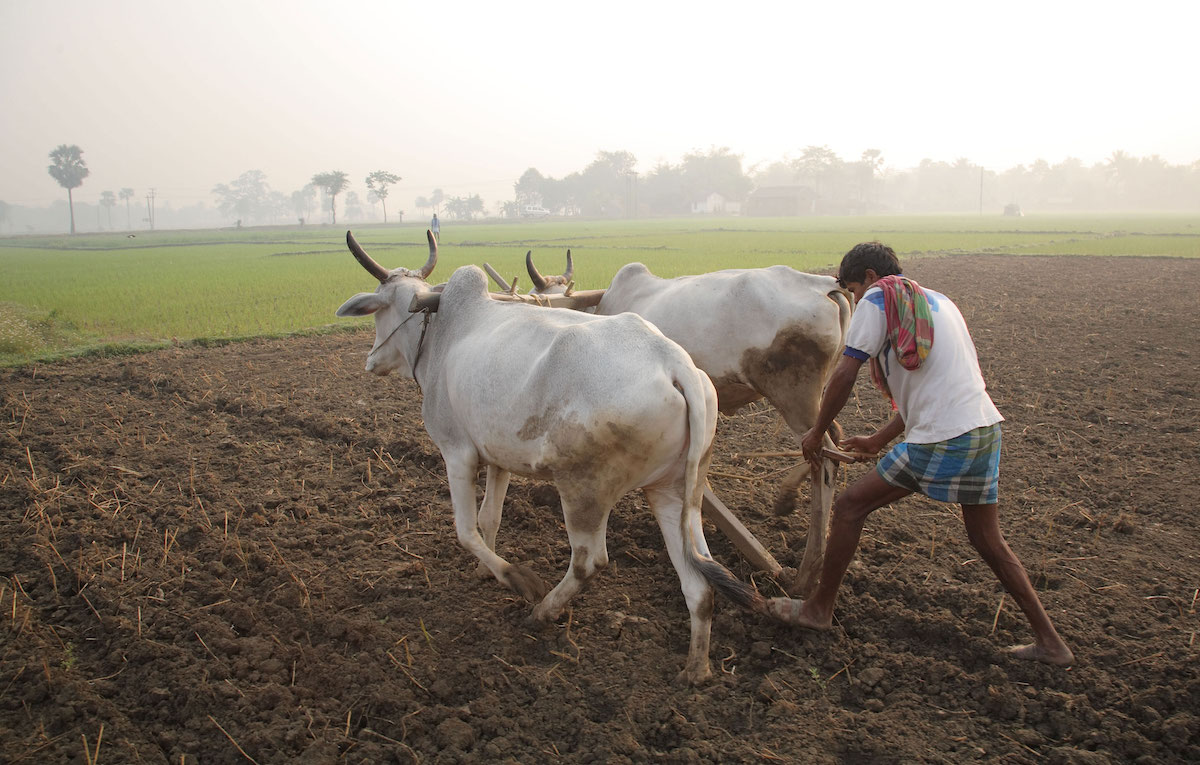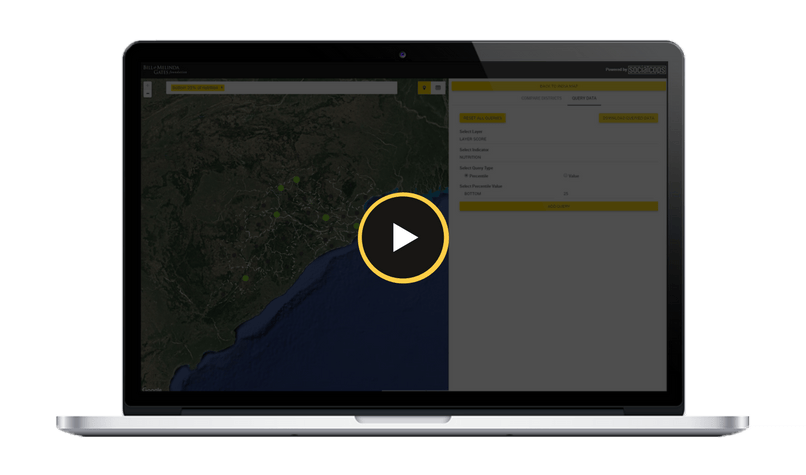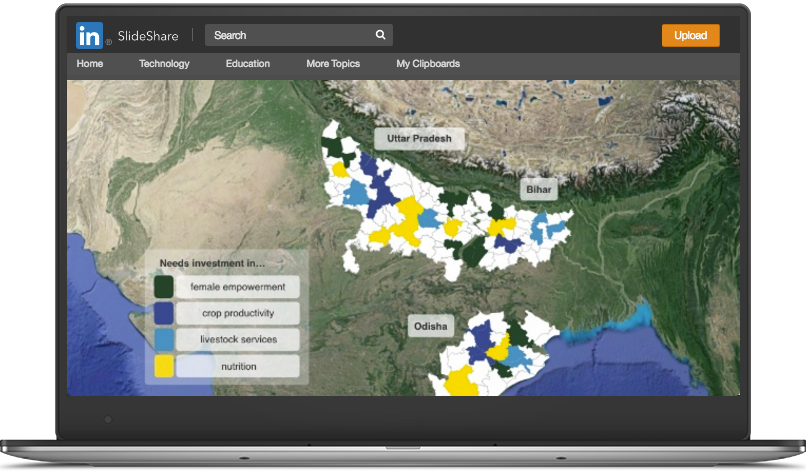
Case study

Case study
The Bill and Melinda Gates Foundation decided to invest $8 million in initiatives for small and marginal farmers in India. They partnered with us to effectively target this investment using data.

Bill & Melinda Gates Foundation
Philanthropy
Bihar Odisha Uttar Pradesh India
The Bill & Melinda Gates Foundation, the largest private foundation in the world, created an $8 million fund to aid small and marginal farmers in Bihar, Odisha, and Uttar Pradesh in India.
They wanted to use data to identify where they should invest to maximize their impact and focus on internal priorities (female empowerment, agricultural extension, nutrition, and more). However, agriculture data for India is scattered, inconsistent, and difficult to work with.
The Gates Foundation partnered with us to create a data-driven way for teams at the Gates Foundation to target their investments. Our platform was deployed to aggregate data from public sources, clean and structure the data, and visualize the data in an intuitive, useful dashboard.
Data aggregation
Data from 31 sources was compiled, covering 209 indicators in 9 layers (agricultural profile, crop productivity, nutrition, etc).
Data cleaning and score creation
Our data scientists cleaned and verified all the data, then converted each layer's data into a single score for easier comparison across districts.
Data visualization
Data was visualized on an interactive dashboard with state-level views, district comparisons, an intelligent query engine, and access to raw data.

VIDEO DEMO
Check out our video demo to check out the dashboard that the Gates Foundation used to invest $8 million in agriculture.
Watch the video demoUsers could drill down from national to district-level data, query at any level, and download the results to Excel.
Geospatial mapping made it easy to identify geographic clusters, patterns, and insights that would have been impossible to see in a table.
Teams at the Gates Foundation could find focus geographies with queries like “top 50 districts based on female-headed rural households”.
Productivity and coverage for dozens of crops, including wheat, rice, maize, sugarcane, barley, groundnuts, moong, and mustard
Characteristics about agricultural workers, cultivators, laborers, small & marginal landholdings, income, debt, spending, and more
Households with bank accounts, MNREGA-linked accounts, Kisan credit card use, credit limit, post office accounts, and more
Productivity and coverage for dozens of farmed foods, including onion, potato, sweet potato, peas, beans, pulses, and chilies
Mobile & landline use, electricity consumption, road length, water sources, mechanical agricultural equpiment, access to fair price shops, and more
Available services, centers and equipment for various livestock, including cattle, buffaloes, sheep, goats, pigs and poultry
Infant & maternal mortality rates, wasting & stunting, MUAC (Mid-Upper Arm Circumference) measurements for children, and more
Coverage of National Food Security Mission scheme, and food security for staple foods like pulses, rice, wheat, cereals, and more
Number of female-headed households & female cultivators, women's land ownership, female literacy rate, women-owned agricultural equipment, and more

DECK
Want more information? Check out Slideshare for more details and the full story behind this case study.
Read more